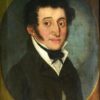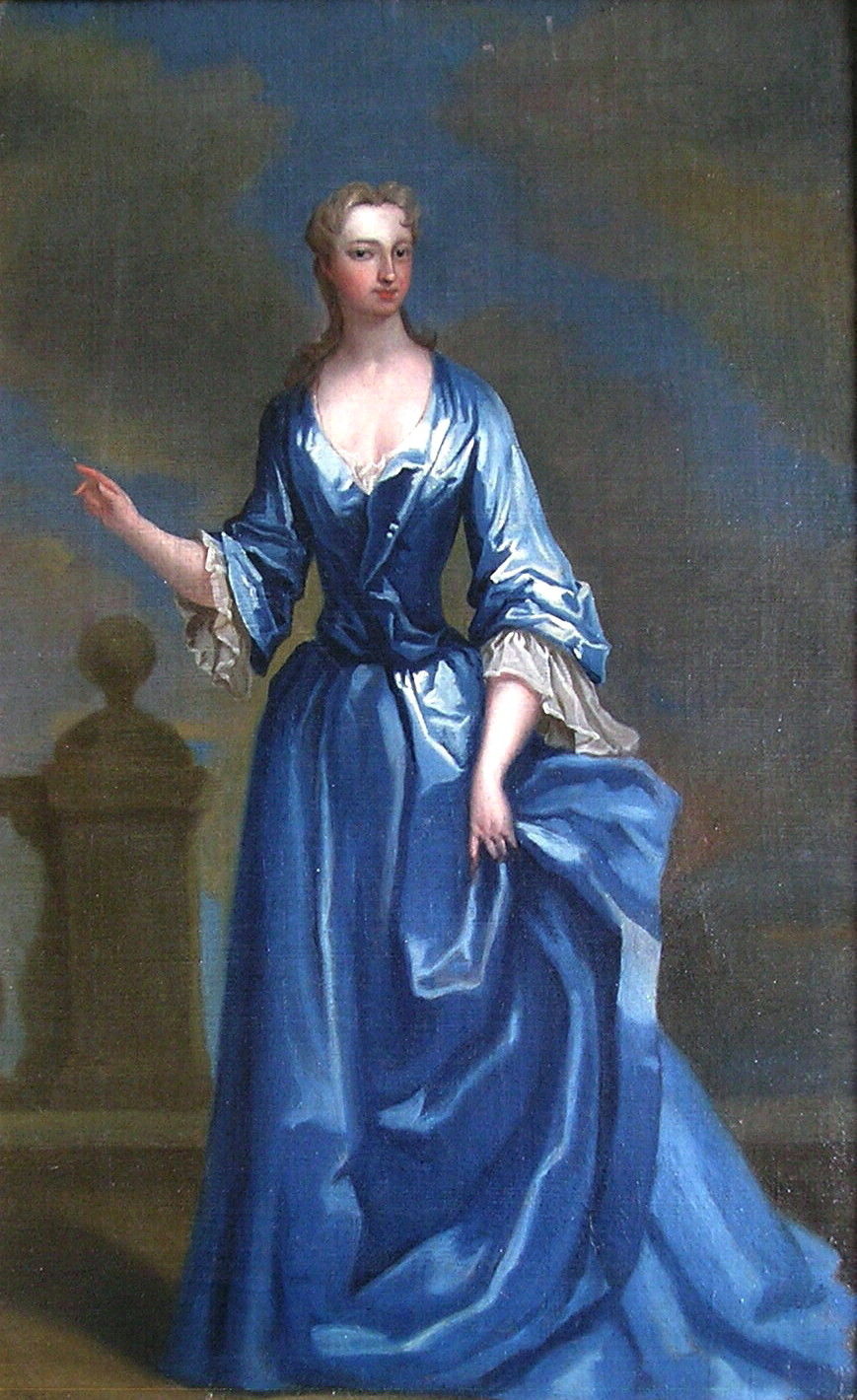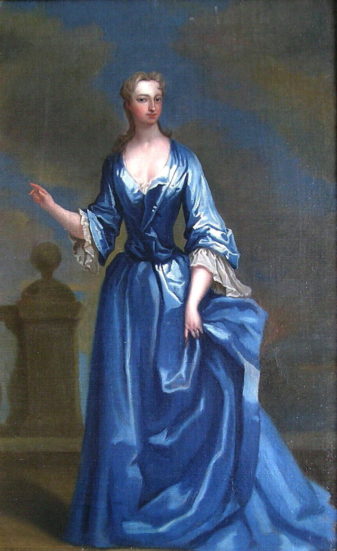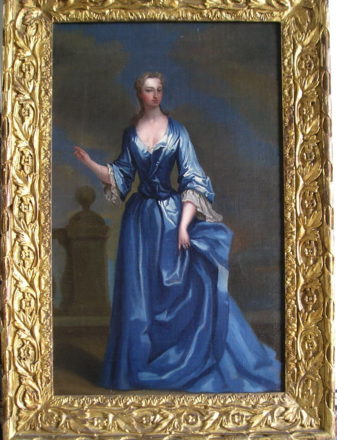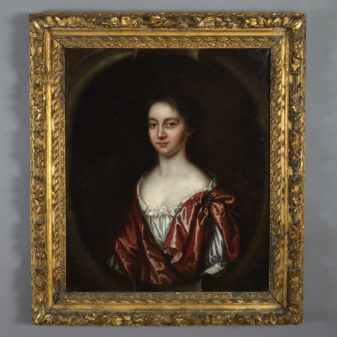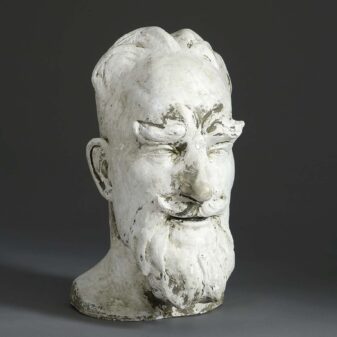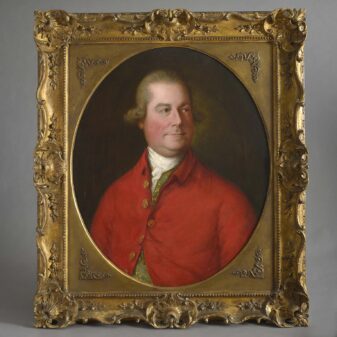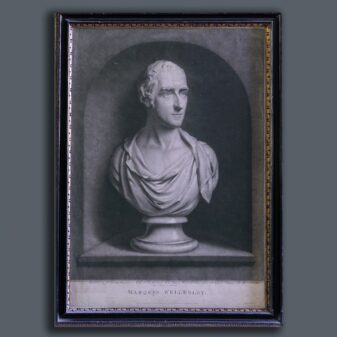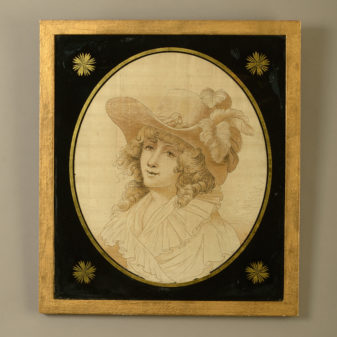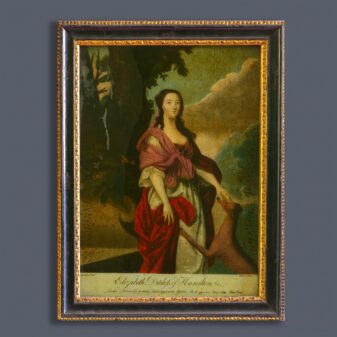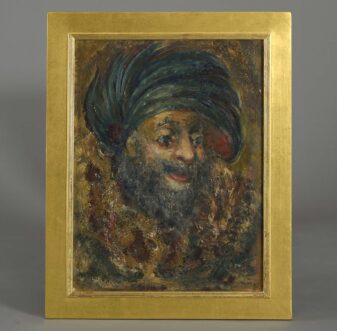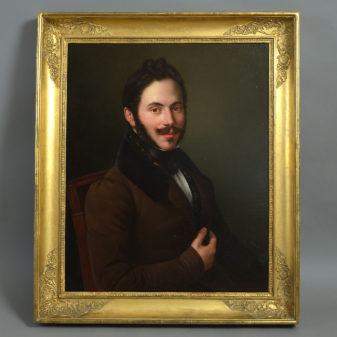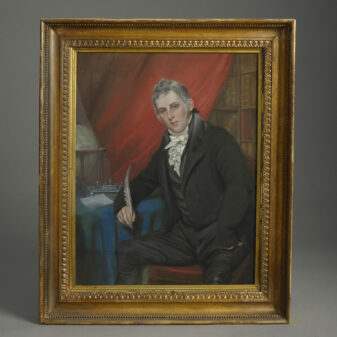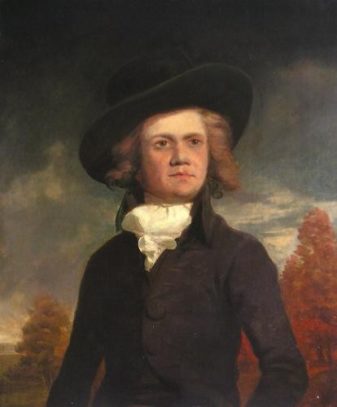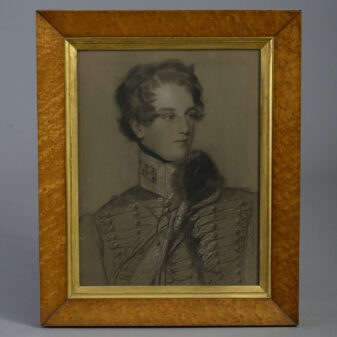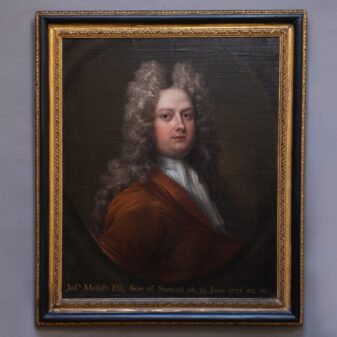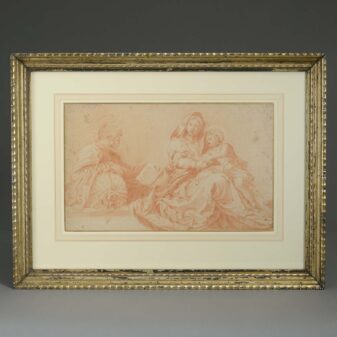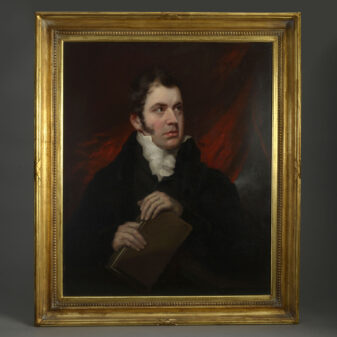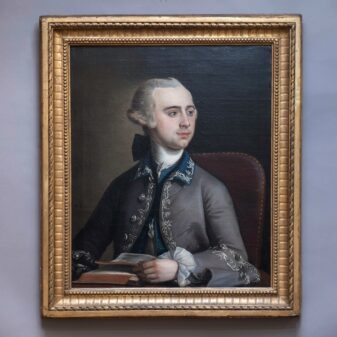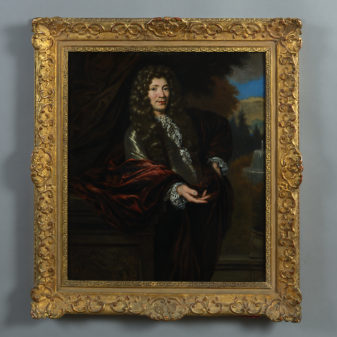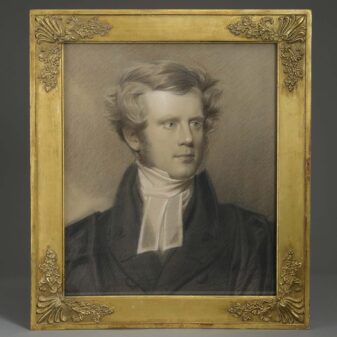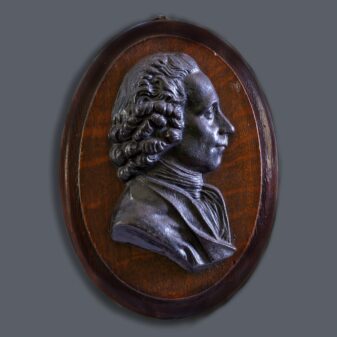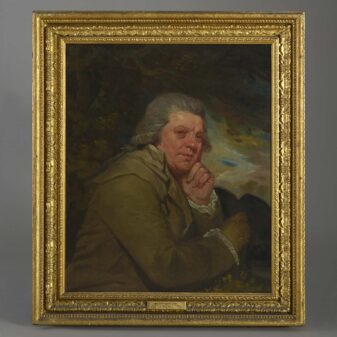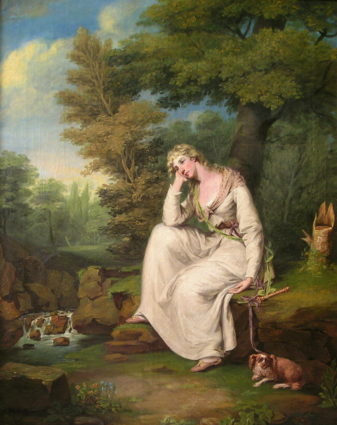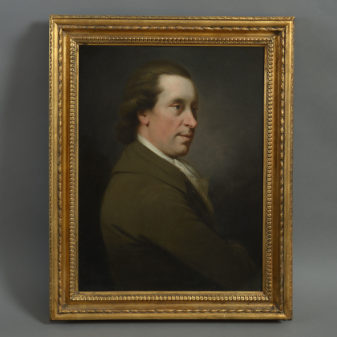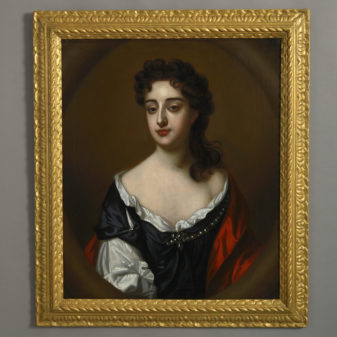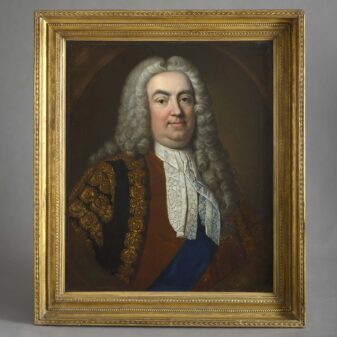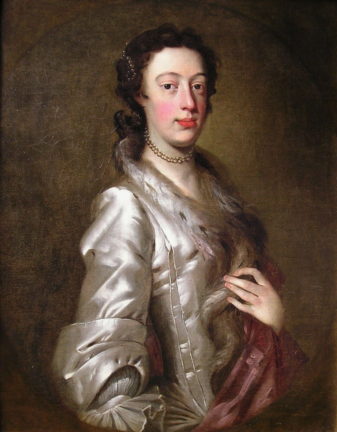After Charles Jervas, Portrait of Henrietta Godolphin (née Churchill), Second Duchess of Marlborough
£7,500
SOLD
Oil on canvas; 18 by 11 ½ in; 46 x 29 cm; held in a gilt carved frame
Provenance: The David Style Collection, Christies 12/13th January 2005, lot 244; Philip Mould Ltd.
We are very grateful to Caroline Pegum, who is compiling the catalogue of Jervas’s works which will include this painting, for her thoughts on this portrait.
This jewel-like full-length portrait, like that of the Countess of Bridgewater, most probably relates to a lost life size portrait of Henrietta, 2nd Duchess of Marlborough. Other portraits exist which compare favourably with this opinion and it would make sense as a pendant to the portrait of her sister. The survival of this painting enables us to appreciate the elegance of the original composition as conceived by Charles Jervas (1675-1739). We may also note the skill of this painter who has perfectly depicted the fine detailing of the sitter’s skin and silk dress.
Painted by the same artist, it is most likely that these two small scale portraits were produced as a record for another relative or indeed an admirer of the sitter. These ladies were members of the highest society, being heiresses to England’s most important and celebrated military commander. Their images carried celebrity status and would have captured the wider public’s imagination.
Henrietta Churchill was the elder daughter and heiress to the great English general, John Churchill, 1st Duke of Marlborough. She married Francis Godolphin, the 2nd Earl of Godolphin in March 1698. In 1706, an act of Parliament permitted the First Duke’s daughters to inherit his English titles. Thus, following his death in 1722, Lady Godolphin became suo jure Duchess of Marlborough. Under Queen Anne, she was a Lady of the Bedchamber. She scandalously embarked on an affair with the dramatist William Congreve resulting in the birth of an illegitimate daughter. Despite this, her relationship with her husband appears to have remained amicable. However, she had a strained relationship with her mother, Sarah, and she died before any form of reconciliation was possible. Her mother commented, ‘She had many good things in her, with some oddness’, but she was ‘a cruel daughter and mother’. This statement could equally have been made by Henrietta concerning her own mother.

